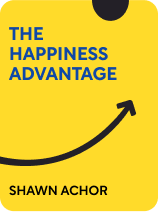

This article is an excerpt from the Shortform book guide to "The Happiness Advantage" by Shawn Achor. Shortform has the world's best summaries and analyses of books you should be reading.
Like this article? Sign up for a free trial here .
What is the Tetris Effect? How can it be used to make positive thinking a habit?
The Tetris Effect describes the phenomenon where regular players of the game began to see objects in their everyday lives as shapes that they needed to fit into gaps. Similarly, the more you engage in certain patterns of thinking, the more likely you are to use them again.
Find out how you can use the Tetris Effect to improve your mindset.
What Is the Tetris Effect?
The more you engage in any pattern of thinking, the more your brain will use the same formula to evaluate other things in life. In gaming, this phenomenon has been dubbed the Tetris Effect: After playing hours of the tile-matching video game, gamers saw objects in their everyday lives as shapes that they needed to fit into gaps, as if they were still playing the game.
Similarly, professions that hinge on finding problems and errors—such as tax auditors and lawyers—create similar mental patterns. While such training might be beneficial for work, it can cause them to habitually seek out problems in their personal lives, as well. For example, a tax auditor actually created an Excel spreadsheet to track the mistakes his wife made. Similarly, athletes often have a hard time switching off their competitive drive. If your brain is in the habit of recognizing negatives, then that’s all you see, but if you train your brain to look for positives, you can reset your mental filter to focus on the positive.
Your Focus Determines Your Experience
In any given moment, you’re exposed to far more stimuli than you could possibly process. In a single moment, you can hear the hum of an air vent, see someone walking by in your peripheral vision, and think about what you’ll make for dinner tonight. In order to get anything done, your brain must constantly filter out most of your experiences so that you can focus on pertinent information.
However, your brain’s filter is so powerful that you can entirely miss something that seems obvious. In one experiment, participants watched a video of a basketball game and counted the number of passes between players in white jerseys. Twenty five seconds into the video, a person in a full gorilla suit walks through the scene—but 46 percent of participants didn’t notice it. This phenomenon, called inattentional blindness, illustrates how effectively your focus shapes your experience.
Your brain’s filter works as well as your email’s spam filter: Sometimes it tosses aside important information, and you have to reprogram it. When you develop a negative thought pattern, you can experience inattentional blindness toward positive things—in other words, not only are you focusing on the negative, but you’re actively not seeing the positive.
While a negative thinking pattern—the Negative Tetris Effect—primes you to look for problems, to miss key pieces of information, and to overemphasize certain perspectives, you can train your brain to create a Positive Tetris Effect. When you implement a positive thinking pattern, you’ll be more likely to notice and capitalize on opportunities, which will contribute to your success, reinforcing your positivity and creating a virtuous cycle.
Specifically, applying the Tetris Effect raises your:
- Happiness, which brings the performance advantages we’ve talked about
- Gratitude, which raises your emotional intelligence, energy, and capacity to forgive, while lowering anxiety, loneliness, and depression
- Optimism, which makes you inclined to set more ambitious goals, work harder to achieve those goals, persevere when facing obstacles, and be better able to manage stress and overcome challenges
The effects of the Positive Tetris Effect were illustrated in a study of two groups of people who self-identified as either lucky or unlucky. Both groups were told to skim a newspaper and count the number of photos it contained. Within the newspaper were two large messages, one telling the participants to stop reading because there were 43 photos and another stating that the reader had won $250. The people who considered themselves lucky generally noticed the messages, enabling them to complete the exercise in mere seconds and also win the reward. By contrast, the self-identified unlucky group missed the messages (and the reward) and took longer to scour the entire paper.
Apply the Tetris Effect
In the same way that playing hours of Tetris can rewire your brain, other mental exercises can reprogram your brain to notice positive scenarios and opportunities. In order to train your brain to see the positive, try one of these strategies:
- Every day, take five minutes to write a list of three things in your life that make you happy or grateful.
- Three times a week, spend 20 minutes writing about a positive experience.
Make the habit easier to maintain in order to increase your chances of success:
- Do your writing at the same time each day.
- Keep the necessary tools—your pen and paper—easily accessible.
- Involve others by turning these exercises into a group activity. For example, make a ritual of going around the dinner table each night and having everyone list three positive things from their day, or do the same at weekly staff meetings. When you create social support, the accountability helps you to maintain the habit, and the benefits of positive thinking multiply among everyone involved.
Studies show that these strategies have lasting benefits, including:
- Elevated gratitude
- Increased happiness
- Fewer incidents of illness
- Improved sleep
- A greater sense of social connection
- A more optimistic outlook
Additionally, developing a positive thought pattern makes it easier to practice the habits and achieve the benefits we discussed in earlier sections, such as:
- Recognizing employees’ strengths and giving them positive feedback
- Raising the Losada Line ratio of positive-to-negative comments
- Cultivating greater gratitude for your work and thereby perceiving it as a calling rather than simply a job or career
The goal of the Tetris Effect is not to have irrational optimism or turn a blind eye to problems that need improvement. Rather, by adding a positive tint to your view of the world, you can maintain awareness of problems and concerns, while choosing to prioritize a positive perspective. In other words, recognizing and having gratitude for the good in your life is actually the best mechanism for creating more positive outcomes.

———End of Preview———
Like what you just read? Read the rest of the world's best book summary and analysis of Shawn Achor's "The Happiness Advantage" at Shortform .
Here's what you'll find in our full The Happiness Advantage summary :
- How happiness isn’t the result of success, it’s the cause of it
- The benefits of happiness—from increased creativity to improved health
- Strategies for adopting a positive mindset and raising your happiness baseline






